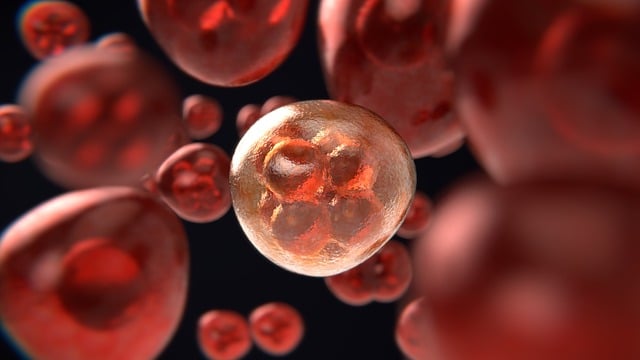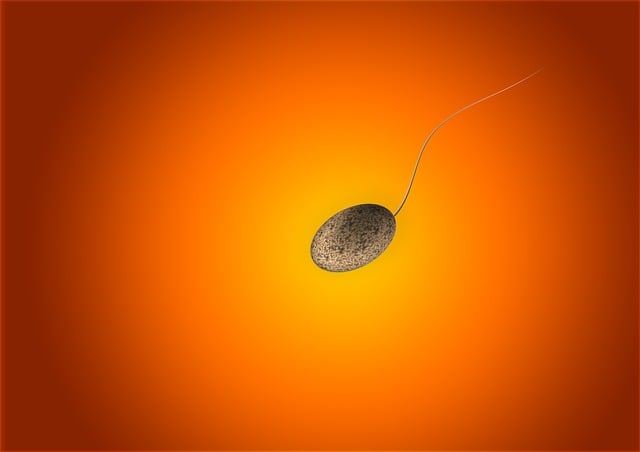Optimizing stem cell culture media is crucial for stem cell research and therapies. Key components like chemically defined growth factors and serum-free media ensure controlled environments free from animal products. Customization of media formulations controls cellular microenvironments, impacting stem cell behavior. Sterility, stability, and quality control are vital to maintain cell integrity and viability. Different stem cell types require specific media for undifferentiated maintenance or large-scale production. Xeno-free systems offer improved consistency and reduce contamination risks, advancing stem cell research and therapeutic development.
“Unleashing the Potential of Stem Cells: Optimized Culture Media for Enhanced Growth and Differentiation. This comprehensive guide delves into the intricacies of stem cell culture media, an indispensable component in stem cell research and applications. From understanding the unique requirements of these versatile cells to exploring tailored formulations and sterility protocols, we dissect crucial aspects. Learn how customized media can propel your research, while ensuring long-term stability and quality control. Discover expert insights on selecting the perfect media for diverse stem cell applications.”
- Understanding Stem Cell Culture Media Requirements
- Key Components for Optimized Growth and Differentiation
- Media Formulations: Customization vs. Standard Protocols
- Ensuring Sterility and Stability in Stem Cell Media
- Long-term Maintenance: Storage and Quality Control
- Choosing the Right Media for Specific Stem Cell Applications
Understanding Stem Cell Culture Media Requirements

Understanding the specific requirements of stem cell culture media is paramount in stem cell research and applications. Stem cells are unique in their ability to differentiate into various cell types, making them a cornerstone for regenerative medicine and tissue engineering. However, this versatility comes with complex cultural needs that must be met for optimal growth and functionality. The composition of stem cell culture media, including essential nutrients, growth factors, and supplementary components, plays a critical role in maintaining the undifferentiated state of these cells.
Media optimization for clinical-grade stem cells is a meticulous process involving rigorous testing and quality control measures. Researchers must ensure that the chosen media supports robust cell proliferation while minimizing potential contamination from animal sources (xeno-free stem cell culture systems). Regular monitoring and standardization of media components are essential to maintaining consistent results, ensuring the safety and efficacy of stem cell therapies for clinical applications. Stem cell research media quality control is a vital step in achieving reliable outcomes and advancing the field towards transformative medical solutions.
Key Components for Optimized Growth and Differentiation

The success of stem cell research heavily relies on the meticulous formulation and optimization of stem cell culture media. Key components that facilitate optimized growth and differentiation include chemically defined stem cell growth factors and serum-free stem cell growth medium. These components provide a controlled environment, free from animal-derived products, which not only enhances consistency but also mitigates potential contamination risks.
By employing cost-effective stem cell media preparation methods, researchers can streamline their workflows and reduce expenses without compromising on quality. This is particularly crucial in high-throughput applications where the ability to produce large volumes of optimized media efficiently can significantly impact research outcomes and timely translation into therapeutic settings.
Media Formulations: Customization vs. Standard Protocols

In the realm of stem cell research and therapy, optimizing stem cell culture media is a game-changer. While standard protocols offer a baseline for stem cell media formulations, many researchers are now recognizing the benefits of customization to meet specific experimental or therapeutic needs. This shift towards tailored media preparations allows for enhanced control over cellular microenvironments, which can significantly impact stem cell behavior and differentiation potential. Customization involves modifying key components such as growth factors, supplements, and pH balance adjustments, enabling researchers to create long-term stem cell culture solutions that best support their particular applications.
The decision between custom formulations and adhering to standard protocols hinges on several factors, including research objectives, cost considerations, and the availability of specialized equipment. Cost-effective stem cell media preparation methods have gained traction, especially in light of the increasing demand for stem cell therapies. By carefully balancing the benefits of customization against practical constraints, researchers can develop efficient long-term stem cell culture solutions that drive advancements in regenerative medicine and beyond.
Ensuring Sterility and Stability in Stem Cell Media

Maintaining sterility and stability is paramount in stem cell media to ensure the utmost quality and safety of clinical-grade stem cells. The media must be carefully formulated and handled to prevent contamination, as even trace amounts of impurities can significantly impact the health and functionality of these delicate cells. This involves stringent sterilization techniques during media preparation and packaging, such as autoclaving or filter sterilization, to eliminate any microbial contaminants.
Media optimization for clinical-grade stem cells extends beyond sterility to include stabilizing components that prevent degradation over time. Animal-component-free stem cell culture protocols are increasingly favored due to their reduced risk of xeno-contamination and enhanced consistency. Adhering to established stem cell culture quality assessment guidelines ensures that the media supports optimal cellular growth, maintains the undifferentiated state, and promotes efficient expansion without introducing unwanted substances or conditions that could compromise the cells’ integrity.
Long-term Maintenance: Storage and Quality Control

Maintaining stem cell cultures over long periods requires careful consideration and consistent quality control. Proper storage conditions are essential to preserve the viability and functionality of stem cells, ensuring their longevity for future applications. This includes controlled temperature, humidity, and light exposure, which can impact cell survival. Regular monitoring and testing of stem cell media formulations for clonal expansion are crucial steps in long-term maintenance.
Regular quality control involves checking the sterility, pH levels, and nutrient content of the defined stem cell media components to ensure they remain optimal. Stem cell media stability testing is a critical process that assesses the viability and growth rate of cells over time, helping researchers identify any potential degradation or changes in media formulations. This ensures the consistent performance of stem cell cultures throughout their life cycle, which is vital for reliable research and therapeutic applications.
Choosing the Right Media for Specific Stem Cell Applications

Choosing the right stem cell culture media is paramount for specific applications. Researchers must consider factors like cell type, passage number, and intended use when selecting a media formula. For instance, stem cell maintenance media formulations designed for long-term culture support undifferentiated states, while specialized media for stem cell bioreactor media optimization caters to large-scale production requirements.
Xeno-free stem cell culture systems have gained popularity due to their ability to minimize immunogenic responses and contamination risks. These systems replace animal components with synthetic alternatives, enabling more consistent and reliable results. Optimizing these media formulations is crucial for achieving robust stem cell growth and differentiation in various applications, from basic research to clinical therapies.
Stem cell culture media is a dynamic field, with ongoing research emphasizing the importance of optimized formulations for efficient growth, differentiation, and long-term stability. By understanding the unique requirements of stem cells and tailoring media components accordingly, researchers can unlock their full potential. Customization, sterility, and quality control are key aspects to consider when selecting the right media for specific applications, ensuring successful navigation through the intricate landscape of stem cell culture.














